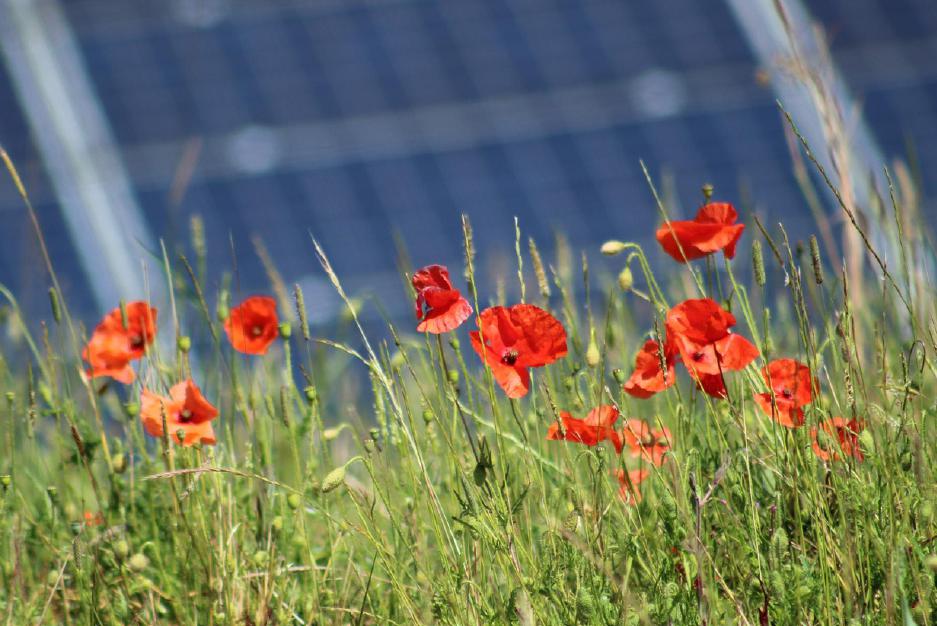
Image: Solar Energy UK
A national survey of wildlife on solar farms has found that they can be havens for wildlife when specifically managed for conservation.
Solar Energy UK’s Solar Habitat: Ecological trends on solar farms in the UK, has found that several declining bird species such as the Linnet, Yellowhammer and Skylark are present at half of the solar farms who took part in the survey.
The survey uses a standardised approach to ecological monitoring set out by Solar Energy UK last year to better make comparisons across solar sites. To do this, they partenered with Clarkson & Woods, Wychwood Biodiversity and Lancaster University, “providing a uniform approach to how the solar industry collects ecological monitoring data on solar sites. This allows for the amalgamation of data, forming a robust, credible evidence base showing the ecological trends on solar farms.”
Hollie Blaydes, the PhD student who led the research said: “It is very clear that solar farms can be wildlife havens. About half of the solar farms surveyed are managed with conservation specifically in mind, such as limiting grazing to only certain times of the year and reducing herbicide use. It’s on these where wildlife can really thrive and benefit from the habitats created.”
Blaydes added that the survey findings and a requirement for new developments to include at least 10% Biodiversity Net Gain (BNG) could encourage the renewable industry to improve biodiversity even further.
The report notes that “the low intensity of management on solar farms, as well as the range of habitats present, can support a variety of invertebrate species.” These species support other forms of biodiversity as food or pollinators.
Biodiversity at solar farms was “strongly associated with management being more focused on wildlife. Almost all sites (94%) had some conservation measures, graded 2-3 on a 1-5 scale, where one is optimal.”
“This report confirms what we have known anecdotally for many years: well-designed and well-managed solar farms can help address the climate emergency and loss of biodiversity in the UK, said Rachel Hayes, consents and ESG policy manager at Solar Energy UK.
“Wildlife can benefit hugely from developing solar farms, providing a variety of habitats and raising the numbers of some of our most threatened species while pushing us forward towards net zero. I hope that the report’s findings will encourage more asset owners to adopt the standardised approach to monitoring ecology on solar farms and make the results even more robust,” she added.
Under the provisions of the Environment Act 2021, all development schemes in England will need to deliver a mandatory 10% biodiversity net gain to be maintained for a period of at least 30 years. The provision comes into force in November 2023, but many solar developments are already making provisions for increasing biodiversity on site.
Solar Power Portal reported recently on a solar farm project by Banks Renewables that recently recieved council consent in Rotherham: “Banks Renewables will produce a detailed ecology and biodiversity strategy, with the aim that the site delivers a net benefit in biodiversity.”
